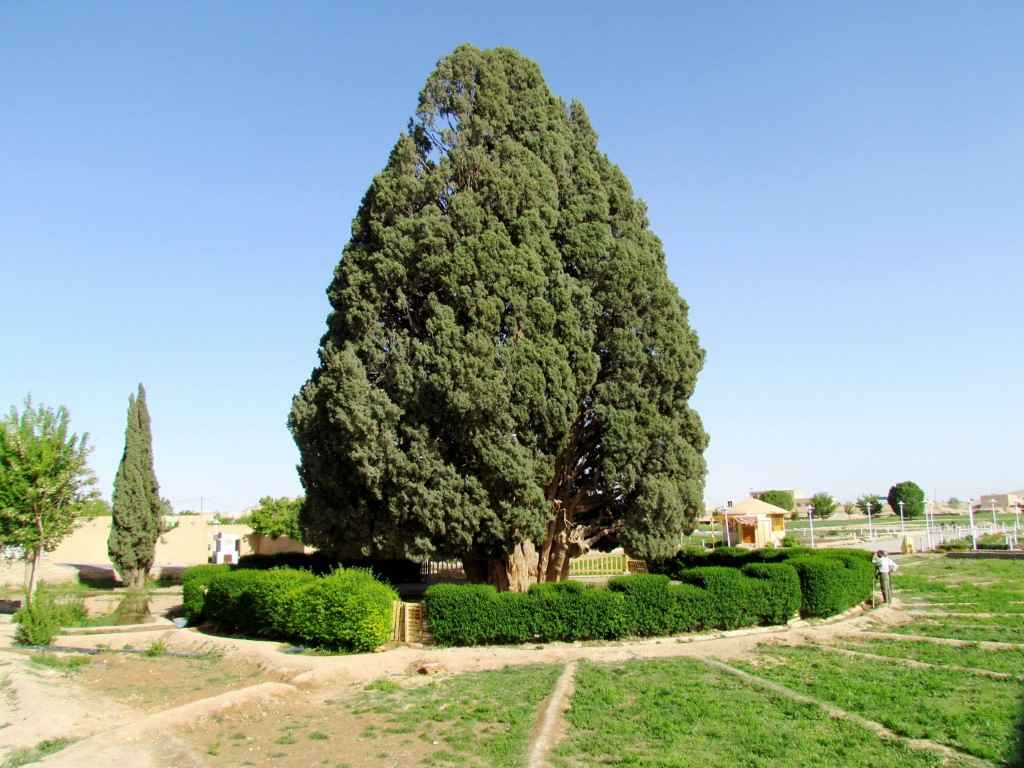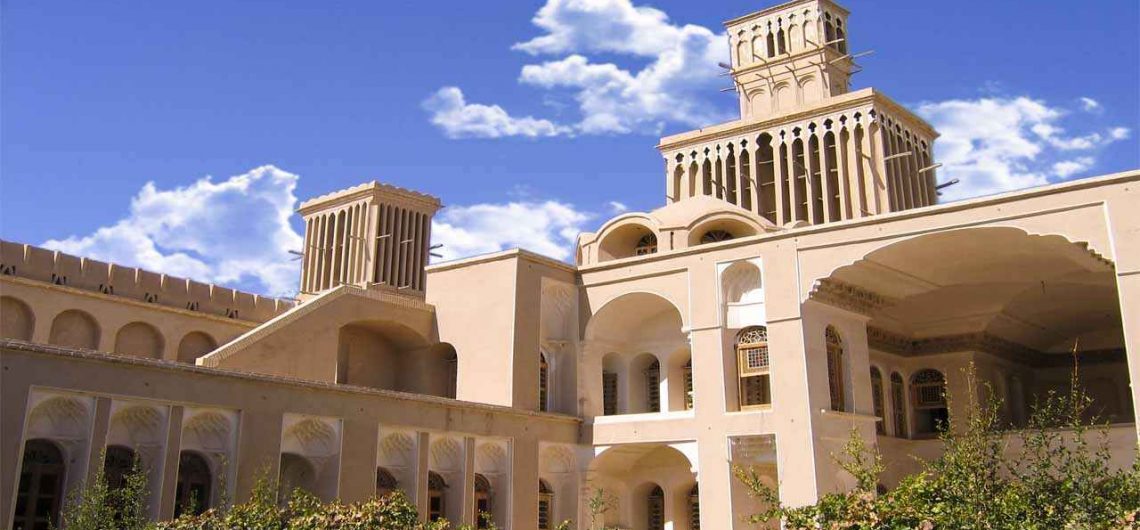Abarkuh
Abarkuh is one of the oldest cities in Iran, located in the center of the country and in the Yazd province. The presence of numerous archaeological sites testifies to an ancient civilization. As this city was first built at the foot of the mountain, kuh in Persian, it was called “Berkuh” (next to the mountain), which later became “Abarkuh” in popular language. With the passage of time, the city was officially named “Abarkuh.” In various ancient and recent sources “Abarqu”, “Abarkuyeh”, “Abarquyeh” have been mentioned. In addition to the archaeological sites, Abarkuh, due to its geological position and the characteristics of its land, produces one of the best apricots in Iran. Between the months of June and July, farmers sell this sweet and tasty fruit in trucks on the sides of urban roads, or it can also be enjoyed as a dried fruit.

Cypress
The first wonder of the city is a century-old cypress that, according to experts, including a famous Russian scientist, is almost 4,000 years old. This famous cypress, also known as Abarkuh cypress, remains green and robust and, with its majestic trunk and magnificent height, it stands in the heart of the city. The ancient cypress is located in the southern part of the city, and its height is said to reach almost 28 meters and its trunk circumference is 11.5 meters. The Abarkuh cypress is one of the wonders of nature that, with its roots in the earth and its silent language, tells us its ancient history.
Ice and adobe house
Coming from Shiraz to Abarkuh -on the way to Yazd- on the main road, there is a large conical construction called Aghazadeh Ice House.
Ice houses (also called refrigerators in some cities) are usually brick constructions with a circular and conical plan. The reason why it received the name Yakhchal in Persian (ice well) is that it is a bowl-shaped well, dug to store ice. These structures were built with the aim of producing and storing ice, so that on cold winter nights the water stored in the tanks, located near the construction, would freeze and the blocks of ice were broken, transported and stored. inside the ice house. This process continued until the tank was filled and the ice surface was level with the entrance. The conical shape of the ice house made it possible to store ice for use in summer.
Gonbad-e Ali
On the White Mountain, southeast of Abarkuh, there is a kind of tower / dome called Gonbad-e Ali. This octagonal construction is considered the unique and relevant symbol of the historic city of Abarkuh. It is a stone and plaster mortar monument with an octagonal plan. A brick cladding has been applied to the exterior, demonstrating the characteristics and rare beauty of the decorations. Inside the tower, steps lead to the burial chamber, which was the burial place of the owners of the mausoleum. The thickness of the beams is 1.5 meters and the height of the building is 22 meters.
Aghazadeh House
One of the most valuable houses in Abarkuh and Iran is the Aghazadeh House which can be considered the symbol of this historic city. The Aghazadeh House is located in the southern part of the city. This house, together with other historic houses, formed a magnificent ensemble and consists of two parts: an interior one and an exterior one, well separated from each other. One of the unique spaces of this house is, without a doubt, the two-story wind tower. This tower is an exemplary model, as there are few historical houses in Iran with a shining jewel to display. The building dates from the Qajar period and belonged to Aghazadeh, one of the most important and wealthy people in the city.
If you are passionate about anthropology, historical landscapes and fascinating culture of the Middle East, SITO Travel will help you organize your trip to Iran. Contact us because our experience is born and developed in the field.



Comments